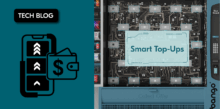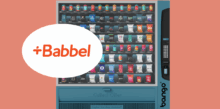Subscription brand executives ditch digital ad spend for new business models
by Giles Tongue | 10 Jun 2025

New data shows nearly half of subscription brands now see digital advertising as a “black hole,” and look to shift spend elsewhere
Subscription brands are pulling away from digital advertising. According to a new industry-wide study from Bango, 48% of subscription leaders report diminishing returns from traditional direct acquisition methods like paid search and paid social media. A further 53% warn that direct marketing is becoming “unsustainable” as customer acquisition costs spiral.
The report – Gravity Shift: Subscribers, bundles, and the acquisition black hole – captures responses from more than 200 senior executives at subscription-based businesses, spanning sectors from AI productivity apps to streaming services, retail, and finance. It reveals a stark reality: the performance marketing model that powered subscription growth over the last decade is under serious strain.
“Direct marketing used to be a reliable engine for growth. Now it’s a black hole. When nearly half your industry says ROI is vanishing, alarm bells should be ringing. It’s time to rethink how subscriptions go to market.”
Anil Malhotra, CMO at Bango
Key findings:
- 88% of subscription brands expect direct acquisition costs to rise in 2025, with nearly one in three forecasting increases of over 25%.
- 80% are cutting back on at least one paid channel, including:
- Paid search ads (33%)
- Display advertising (30%)
- Paid social ads (29%)
- 46% of leaders describe direct marketing spend as a “black hole” for their budgets.
- 53% believe direct channels are no longer a sustainable path to growth.
What’s driving the pullback?
Executives cited rising ad costs, algorithm changes, data privacy limits, and subscriber fatigue as the most pressing challenges. Compounding this, many brands report hitting the ceiling on their ability to profitably scale one-to-one acquisition.
“Netflix spends nearly $3 billion a year on marketing. That’s simply not feasible for the rest of the market. Most brands don’t have the scale to absorb that kind of spend, especially when the returns are eroding. Direct-to-consumer marketing is hitting diminishing returns, and leaders are now looking for smarter, more sustainable ways to grow.”
Giles Tongue, VP Marketing at Bango
Where the money is going
Rather than doubling down, brands are reallocating budget toward indirect acquisition strategies, such as bundling, partnerships, and aggregator platforms. According to the report:
- 82% of brands plan to increase investment in indirect channels this year.
- 90% are already bundling – or plan to – in 2025.
- 72% say indirect routes bring in higher quality subscribers than direct channels.
Among the fastest-growing channels: partnerships with telcos, banks, device platforms, and social media platforms. Over a quarter of brands (27%) are joining “Super Bundling” platforms like Verizon myPlan and myHome to reach new audiences without high upfront acquisition costs.
Bango’s recent consumer data also supports the shift: 62% of U.S. subscribers would prefer to manage multiple subscriptions through a single bundle, and 44% already get at least one subscription free as part of a packaged deal. Among younger users, these numbers are even higher – 55% of 18–24-year-olds now receive a bundled subscription they previously paid for directly.
“We’re seeing a clear shift from the subscription economy to the bundle economy. Consumers don’t want to manage ten separate subscriptions — they want value, convenience, and flexibility. The brands that win in this next phase will be the ones that package their offerings in ways that reflect how people actually want to buy.”
Giles Tongue, VP Marketing at Bango
Implications beyond the subscription market
The findings come at a critical time for digital advertising giants like Google, Meta, and TikTok — whose earnings rely heavily on performance ad spend. If subscription leaders are a bellwether, Bango’s findings suggest we could be entering a post-performance marketing era, where distribution partnerships replace ad impressions as the metric that matters.
Bango expects the pivot to indirect acquisition and bundling to drive a wave of commercial opportunity for its Digital Vending Machine® (DVM™) platform. Bango’s DVM currently powers many of the world’s leading Super Bundling platforms, including Verizon myPlan and myHome, and supports acquisition for major services such as Netflix, Amazon Prime, Disney+, Uber, YouTube, and Xbox. With 90% of subscription leaders now investing in bundling, the DVM is well placed to capitalize on the wider industry adoption and accelerated growth of indirect marketing through 2025 and beyond.
Gravity Shift: Subscribers, bundles, and the acquisition black hole
Subscribe to our newsletter
Get the latest subscription bundling news and insights delivered straight to your inbox.



